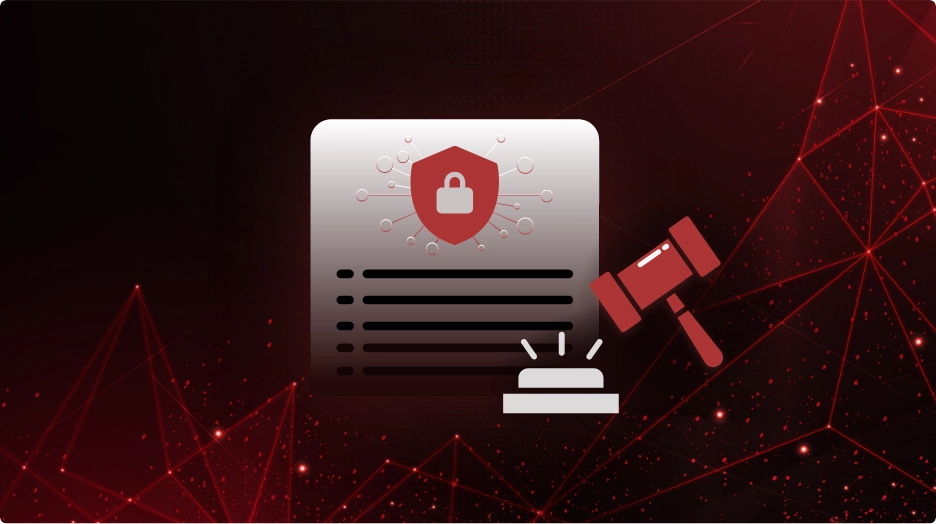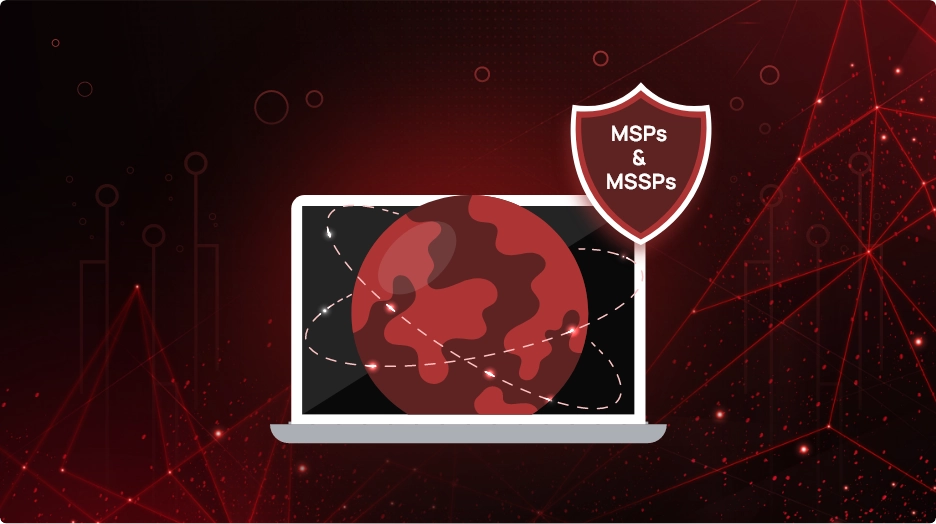The SEC’s New Cybersecurity Disclosure Rule: What It Means for Your Business

The SEC’s recent vote on cybersecurity disclosure presents a game-changer for publicly traded companies. This new rule mandates that major cyberattacks must be disclosed within four business days. Timely disclosure has always been critical, as it not only safeguards investor trust but also shields companies from legal repercussions.
In this blog, we delve into the SEC’s new rule, exploring what constitutes a ‘material’ cyberattack and the implications of non-compliance. We’ll emphasize why having a solid security strategy is paramount. We will also discuss how robust security posture management tools like CheckRed can streamline security efforts. Let us navigate the changing landscape of cybersecurity and its impact on your organization’s security posture.
The SEC’s New Rule
The U.S. Securities and Exchange Commission (SEC) has passed a new rule requiring publicly traded companies to promptly disclose significant cyberattacks within four business days. This rule, approved by a narrow 3-2 vote, is intended to ensure consistent and timely reporting when an incident is considered “material” to shareholders.
SEC Chair Gary Gensler emphasized the need for transparent and comparable disclosures. However, exceptions may apply if disclosing an incident within the four-day window poses a substantial national security or public safety risk, as determined by the U.S. attorney general. While some industry experts support the rule for improving cybersecurity preparedness, dissenting voices argue that it benefits potential hackers rather than investors.
The rule was decided to go into effect 30 days after publication in the Federal Register. Companies must report material cybersecurity incidents using a new Form 8-K item, providing details on the incident’s nature, scope, timing, and impact.
Additionally, the SEC adopted a rule requiring public companies to annually disclose cybersecurity risk management, strategy, and governance information in their Form 10-K filings. This includes processes for identifying and managing cybersecurity risks, as well as board oversight and management expertise.
Essentially, these rules aim to benefit investors, companies, and the broader markets by ensuring the timely disclosure of critical cybersecurity information, enhancing transparency, and bolstering cybersecurity readiness.
The Implications for Your Security Posture
Timely disclosure isn’t just a regulatory checkbox; it’s a linchpin for your organization’s security posture. When a cyberattack occurs, every minute counts. It is essential to emphasize timely disclosure of major security incidents. Prompt sharing of appropriate details of a breach enables quick response and containment. It’s the first step in an effective defense strategy to prevent further damage.
Fallout of Delayed or Non-disclosure
- Investor Trust and Shareholder Value: Delayed disclosure of important information erodes consumer trust. Investors may react negatively, causing a plunge in shareholder value.
- Legal and Regulatory Consequences: Failure to disclose promptly can lead to dire repercussions and lawsuits, making the financial and reputational impact even more severe.
Need for Proactive Cybersecurity Measures
Timely disclosure should complement, not replace, proactive cybersecurity measures. An effective security strategy should include:
- Regular risk assessments and mitigation plans
- Incident response procedures that are well-rehearsed
- Continuous monitoring to detect threats early
The ability to respond swiftly and effectively hinges on both disclosure and proactive security measures.
The Role of a Robust Security Strategy
With digital transformation becoming the norm, the role of a robust security strategy cannot be overstated for CIOs and CISOs. It’s the compass that helps organizations navigate the sea of cybersecurity challenges. Here’s why it’s essential and what it should encompass:
Importance of a Robust Security Strategy
A well-defined security strategy is the backbone of effective cybersecurity. It provides a clear direction and ensures that all concerned personnel in the organization possess a clear understanding of their role in safeguarding sensitive information.
Components of an Effective Security Strategy
- Risk Assessment and Mitigation: Identifying vulnerabilities and potential threats is the first step. An effective strategy includes regular risk assessments to pinpoint weak spots and mitigation plans to address them proactively.
- Incident Response Planning: No system is impenetrable. An incident response plan is crucial to limit damage when a breach occurs. It outlines actions to take, responsibilities, and communication protocols.
- Continuous Monitoring and Improvement: Cyber risks become more sophisticated with each passing day. Your strategy should involve continuous monitoring for security risks and also ensure efforts to ensure ongoing improvement. Learn from each incident and adapt accordingly.
A security strategy is the shield that defends your organization from cyberattacks. It’s not static; it’s a dynamic, evolving roadmap to resilience in an ever-changing threat landscape.
CheckRed: A Solution to Leverage for Enhanced Security
CheckRed is a powerful and comprehensive SSPM and CSPM tool that helps organizations fortify their cloud computing security posture. Here’s why CheckRed is a valuable addition to your cybersecurity arsenal:
Streamlining and Strengthening Security
- Real-time Risk Detection and Monitoring: CheckRed offers real-time risk detection and monitoring capabilities. It keeps a vigilant eye on your systems, promptly identifying and alerting you to potential threats before they escalate.
- Compliance Management and Reporting: Staying compliant with industry regulations is critical. CheckRed simplifies compliance management, allows for customization of frameworks, and enables generating insightful reports to demonstrate adherence to various standards.
- Guided Remediation: In the event of an incident, prompt response is of the utmost importance. CheckRed streamlines incident response with remediation workflows, helping to reduce potential damage and minimize downtime.
Benefits of Using CheckRed
Leveraging CheckRed translates to significant advantages for your organization:
- Time and Resource Savings: With CheckRed, you save valuable time and resources that can be allocated to other critical tasks.
- Enhanced Security Posture: The proactive approach of CheckRed enhances your security posture, reducing the risk of breaches.
- Peace of Mind: Knowing that you have a comprehensive security posture tool like CheckRed in place provides peace of mind in today’s cyber-threat landscape.
In conclusion, CheckRed is more than just a tool; it’s a proactive partner in your organization’s cybersecurity journey. Its real-time monitoring, risk detection, compliance assessment, and guided remediation capabilities make it an invaluable asset to your organization.


